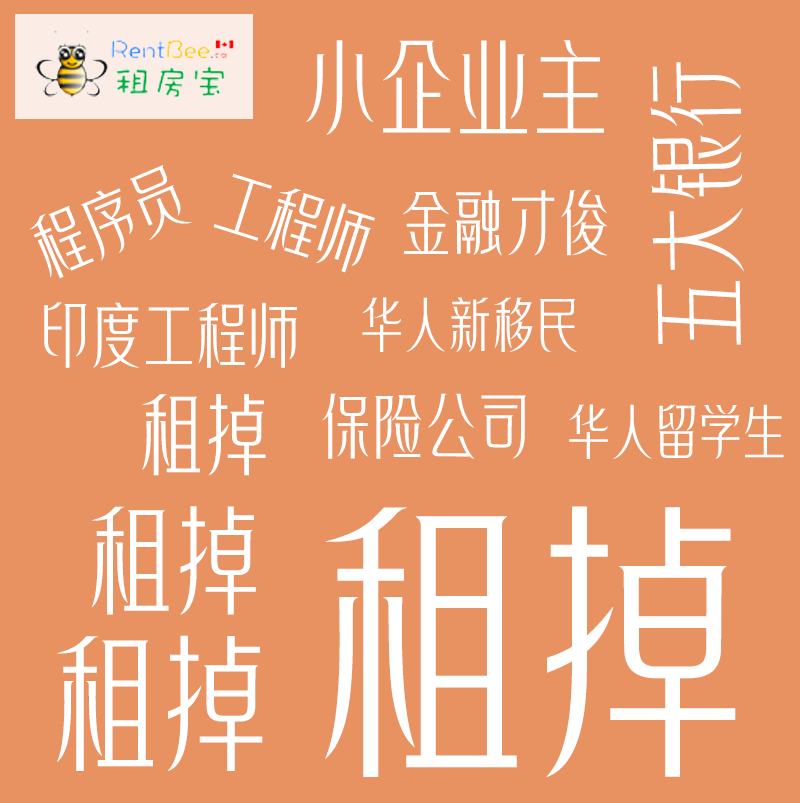A daughter’s gift to her mother saves two lives
Erosalyn Deveza, left, was hoping for a life-saving kidney transplant. Then, one day in 2015, her 19-year-old daughter Aliana stumbled onto medical research that would change their lives. (Winni Wintermeyer/For The Washington Post)
图为埃罗萨琳-德维萨(左)当时希望进行等有人肯肾移植来救命。然后在2015年的一天, 她19岁的女儿阿丽亚娜偶然发现了一个能彻底改变他们生活的医学研究。
By Lenny Bernstein, The Washington Post, May 11 at 8:27 PM
作者:《华盛顿邮报》莱尼·伯恩斯坦,发布于2019年5月11日
Just 42 years old, Erosalyn Deveza was drifting toward death. Her kidneys were barely functioning. She was constantly exhausted. She had vertigo and vomited frequently. She was tethered to a home dialysis machine for eight hours each night as she slept.
才42岁的盛年,埃罗萨琳·德韦萨却要走向死亡。她的肾脏几乎不能正常工作,人总是精疲力竭,经常眩晕、呕吐。每晚睡觉她有8个小时要被绑在家里的透析机上。
A kidney transplant was the only thing that could save her, but it was unlikely to happen in time. There is a severe shortage of kidneys from deceased donorsin the United States. No one on Deveza’s side of the family could provide an organ through a living donation, doctors said, because all were at risk for the same kidney disease. It was too dangerous to leave any of them with a single kidney. Other family and friends were not a match.
肾移植是唯一能救她的方法,但这不可能及时发生。美国已故者捐献的肾脏严重短缺。医生说,德维萨身边也没有家人可以通过活体捐献提供器官,因为所有人都有患同样肾病的风险。让他们中的任何一个只留一个肾都太危险了,其他家庭和朋友们都不匹配。
This is a story of a daughter’s answer to her mother’s illness, an idea so obvious yet so inventive that it had never happened before, and hasn’t since.
本故事是一个女儿对母亲病情的回应描述,她思维明确、富有创意,前无先例、目前也还后无来者。
It took four women, two computer scientists, teams of doctors and support staff, luck and uncommon selflessness to pull it off. Though it occurred nearly two years ago, few knew about the case until it was published in a medical journal last month.
本案例需要4名女性、2名计算机科学家、医生和助手的几个团队、幸运和非比寻常的无私才能成功。虽然这发生在近两年前,但直到上个月发表在医学杂志上之前都很少有人知道这个病例。
Profoundly simple, it may one day change organ transplantation and save lives.
虽然病例非常简单,然而有朝一日这或许可以改变器官移植且拯救生命。
“She’s just amazing, my daughter,” Deveza said.
“她真了不起,我的女儿,”德维萨说。
From left, Connie Saragoza de Salinas, Aliana Deveza, Nancy Ascher, John Roberts, Annie Simmons and Erosalyn Deveza pose for a photo. Aliana Deveza donated a portion of her liver to Saragoza, whose sister Simmons donated a kidney to Deveza’s mother. Ascher and Roberts were among the transplant surgeons. (Jessica Bernstein-Wax/University of California at San Francisco Health)
左起, 康尼·萨拉戈萨·德萨利纳斯、阿丽亚娜·德韦萨、南希·阿舍尔、约翰·罗伯茨、安妮·西蒙斯和埃罗萨琳·德韦萨摆出姿势拍照。阿丽亚娜·德韦萨将她的一部分肝脏捐献给了萨拉戈萨,萨拉戈萨的妹妹西蒙斯向德维萨的母亲捐赠了一个肾。阿舍尔和罗伯茨是其中两位移植外科医生。(加州大学旧金山健康分校)
“We got showed up by a 19-year-old,” said John Roberts, one of the transplant doctors involved. “She thought of it. I didn’t.”
“我们面前出现了一个19岁的孩子,”参与移植的一名移植医生约翰·罗伯茨说。“她想到了这个办法。我却没有。”
To compensate for the shortage of organs from deceased donors, the concept of “live, paired kidney donation” has sprung up in the past 25 years. Healthy people can live with one kidney, allowing them to donate the other.
为了弥补已故捐献者器官的短缺,“活体配对肾脏捐献”的概念在过去25年中已然兴起。健康的人可以靠一个肾生活,从而令他们可以捐献另一个肾。
But if the donor and intended recipient have incompatible blood or tissue types, there can be no transplant. The way around that is for a donor to find a matching recipient, with the understanding that the recipient will find someone to provide a kidney for whomever the original donor designates. In that way, the kidneys are “paired.” Transplant hospitals and others coordinate this process.
但是,如果捐献者和预定接受者有不兼容的血液或组织类型,就没法移植。解决这个问题的方法是让捐献者找到一个匹配的接受者, 但可达成一项谅解录,即接受者会找人为原捐献者指定的任何人提供肾脏。这样,肾脏就“配对”了,移植医院和其他机构会进行协调来实现这一过程。
Sometimes, the search is widened, forming chains of kidney donors and recipients to ensure that everyone who needs an organ receives one. The University of Alabama at Birmingham School of Medicine claims the nation’s longest kidney chain at any single site, with 113 transplants performed over six years.
有时,搜索范围扩大,形成一个肾脏捐献者和接受者的链,以确保每个需要器官的人都能得到一个器官。位于伯明翰医学院的阿拉巴马大学声称自己拥有在美国任何一个地点都是最长的肾链,他们在6年的时间里进行了113例移植。
Nearly 6,600 kidneys have been transplanted in pairs or chains, including 938 in 2018, according to the United Network for Organ Sharing, which coordinates the U.S. transplant system.
根据协调美国器官移植系统的联合器官共享网络的数据,近6600个肾脏被配对或形成移植链,其中包括2018年的938起病例。
Live donation works for livers too. Unlike most organs, livers grow back. If conditions are right, donors can give one lobe of their liver to a recipient whose liver is failing. Within a few months, both pieces should grow into fully functioning livers inside two different people.
活体捐赠也适用于肝脏。与大多数器官不同的是,肝脏可以长回来。如果条件恰当,捐献者可以捐出他们的肝脏的一个叶,给肝功能失败的接受者。几个月内,双方都应该能在不同的人体内长出完全正常运作的肝脏。
But the surgery is riskier than kidney donation. Just a few hundred live liver donations occur each year, and only 22 liver transplants have been performed as part of a pair, a UNOS spokesman said.
但手术比肾脏捐献风险更大。器官共享联合网络发言人说,每年有几百起活体肝脏捐赠,却只有22例配对的肝移植。
As Deveza grew sicker at home in Gilroy, Calif., John Dickerson was on the other side of the country, at Carnegie Mellon University in Pittsburgh, working on his doctoral dissertation in computer science.
当德维萨在加利福尼亚州吉尔罗伊的家中病情越来越严重时,约翰·迪克尔森在美国的另一边-匹兹堡的卡内基梅隆大学-致力于他的计算机科学博士论文。
In his work on “multi-organ exchange,” Dickerson examined paired and chained donation and looked at mathematical formulas for increasing the number of organs available for transplant. Some of Dickerson’s earlier work had led to refinements in UNOS’s system for matching donors and recipients, he said. He posted drafts of the research, conducted with his adviser, Tuomas Sandholm, online as he developed his ideas.
在他关于“多器官交换”的的作品中,迪克尔森研究了配对和链状捐赠, 并研究了增加可供移植的器官数量的数学公式。迪克尔森早期的一些工作改进了器官共享联合网络的匹配捐助者和接受者制度,他说。他在网上发布了与他的顾问图马斯·桑德霍尔姆一起进行的研究草案,当时他正在网上提出自己的想法。
“What my paper shows is that . . . in theory you increase the number of transplants by a substantial amount,” said Dickerson, now an assistant professor at the University of Maryland.
“我的论文显示的是...从理论上讲,你可大量增加移植案例,”现在是马里兰州立大学助理教授的迪克尔森说。
“It should increase 25 to 30 percent.”
“这个比例应可增加25%到30%。”
In 2015, Aliana Deveza was a 19-year-old community college student with a mother whose kidney disease was growing worse. She was scouring the web, looking for anything to help, when she stumbled across Dickerson’s research.
2015年时阿丽亚娜-德维萨还是一名19岁的社区大学生,她母亲的肾病此时越来越严重。她在网上到处搜索、寻找任何帮助,突然她发现了迪克尔森的研究。
“I was actually just looking at other types of transplant procedures that are done,” she recalled. “If I can’t donate my kidney, what other thing could I donate so my mom could get a kidney?”
“其实我当时只是在研究其他类型的在进行的移植手术,”她回忆说。“如果我不能捐献肾脏,那么我能捐出什么东西让我妈妈得到一个肾呢?”
She read Dickerson’s paper, full of equations and charts and Greek letters, and didn’t understand that it was presenting a theoretical model. The next morning she was on the phone to transplant hospitals in California, trying for a spot in the program he described.
她读了迪克尔森的论文,里面充满了方程、图表和希腊字母,她并不明白论文是在提出一个理论模型。第二天早上,她打电话给加州的移植医院,试图在那里找到迪克尔森描述的项目的一席之地。
“Nobody knew what I was talking about,” she said. “They didn’t know which department to transfer me to. One hospital I talked to wanted to transfer me to the morgue.”
“没有人知道我在说什么,”她说。“他们不知道该把我转到哪个部门。和我交谈过的一家医院想把我转移到停尸房。”
No one had proposed swapping a liver for a kidney in a paired donation before.
在那以前从没有人提议在配对捐赠中用肝脏换肾。
She emailed Roberts, who runs the liver transplant program at the University of California at San Francisco. “Like the paired kidney exchange, would it be possible to donate (i.e. a part of my liver) to a recipient in need of it and in exchange my mom would be the recipient of the other donor’s kidney?” she wrote.
她给在旧金山加州大学负责肝脏移植项目的罗伯茨发邮件。她写道:“就像配对的肾脏交换一样,是否有可能将(即我肝脏的一部分)捐献给需要它的接受者作为交换,这样我妈妈将成为另一个捐献者肾脏的接受者?”
Roberts found the email the next morning. “When I read that, I was excited,” he said. “Because it was brilliant.”
第二天早上,罗伯茨发现了这封电子邮件。“当我读到它时候,我很兴奋,”她回忆说,“因为它简直是个绝妙主意。”
The Devezas were brought in. Tests were done. And then they settled down to wait.
德维萨斯一家人被带来了,测试已完成,然后他们就安顿下来等结果。
Eighteen months later, UCSF found a match. Two sisters, one in dire need of a liver, the other willing to donate a kidney.
18个月后,旧金山加州大学找到了一个匹配对象:两姐妹,一个急需肝脏,另一个愿意捐献肾。
“I wanted to be a donor for my sister,” said Annie Simmons, 49, a fitness trainer and pet-sitter in Caldwell, Idaho. But her liver was too small for Connie Saragoza de Salinas, who lives in Sacramento.
爱达荷州考德威尔的健身教练、宠物照料者、49岁的安妮·西蒙斯说:“我想为了妹妹捐献者。康尼·萨拉戈萨·德萨利纳斯家住萨克拉门托,对康尼来说她的肝脏太小了。
Two weeks later, the coordinators called back and proposed the swap. “I didn’t even know what they were talking about,” she said.
两周后,协调员回电,提出了交换建议。她说:“我甚至不知道他们在说什么。”
“I was really scared. I had a lot of questions. What if I don’t make it? Will I be able to exercise again. Will I be normal?” Within a day, thought, she agreed to participate.
“我真的很害怕。我有很多问题。如果术后我没法幸存怎么办?我还能再锻炼身体吗?我还会正常吗? ”没过一天的思考之后,她就同意了。
“It’s changed me inside,” Simmons said. “It’s changed my heart. I know it’s something God put there. It was something I needed to do to save her.”
“这改变了我的内心,”西蒙斯说。“这改变了我的心。我知道这是上帝安排好的。这是我需要付出的事情来拯救她。”
When the testing showed the surgery could go forward, there was one last hurdle to clear. Because the risk to Aliana Deveza was much greater than the risk to Annie Simmons, the doctors had to decide whether this first-ever arrangement was ethical.
当检测显示手术可以继续进行时,也还有最后一个障碍需要清除。因为阿丽亚娜-德韦萨面临的风险远远大于安妮·西蒙斯的风险,医生们不得不需要做出决定这空前第一次的安排是否符合道德。
According to a journal article that examined the ethics of this exchange, a liver donor faces a 1 in 500 chance of death, while a kidney donor faces a 1 in 3,000 chance of dying. UCSF’s ethics committee deliberated and approved the transplants.
根据一篇研究这次交流的伦理性的期刊文章,肝脏捐献者面临1/500的死亡几率,而肾脏捐献者面临的死亡几率为1万分之一。UCSF的伦理委员会审议并批准了移植。
On July 20, 2017, at UCSF, surgeon Nancy Ascher removed the right lobe of Aliana Deveza’s liver, which Roberts (who is Ascher’s husband) then implanted in Connie Saragoza. Other surgeons removed Erosalyn Deveza’s two badly impaired kidneys and Annie Simmons’s healthy left kidney, which was implanted in Erosalyn Deveza.
2017年7月20日, 在UCSF的外科医生南希-阿舍尔切除了阿丽亚娜-德维萨的肝脏右叶,罗伯茨(阿舍尔的丈夫) 随后将其植入了康尼身体。其他外科医生切除了埃罗萨琳·德韦萨的两个严重受损的肾脏和安妮·西蒙斯健康的左肾,这个肾脏被植入了埃罗萨琳·德韦萨的身体。
Saragoza suffered life-threatening complications after surgery, according to Simmons and Roberts, but is doing well now. (Saragoza did not return requests for comment.) Though she is on immunosuppressant medication and other drugs, Deveza is much improved and has resumed working full time.
据西蒙斯和罗伯茨介绍,萨拉戈萨手术后出现了危及生命的并发症,但现在表现不错。(萨拉戈萨没有回复记者的评论要求。虽然她仍在服用免疫抑制药和其他药物,德维萨确是有了很大的改善、已恢复其全职工作。
In the past two years, UCSF has tried to arrange other liver-kidney swaps, but without success so far. UNOS said it is not aware of another one, before or since.
在过去的两年里,UCSF曾尽力安排其他肝肾交换,但至今没有成功。器官共享联合网络说,在这之前或之后,他们都不知道还有一个成功病例。
Not surprisingly, the women have become close, despite the physical distance between them. They exchange cards and small gifts in the mail and stay in touch through social media.
不出意外,尽管这些女性身体距离很远,但她们内心已经非常亲密。他们互寄邮件交换卡片和小礼物,也通过社交媒体保持联系。
There was a reunion at UCSF six months after the surgery, which was covered by the Sacramento Bee.
手术6个月后,她们在UCSF重逢团聚,这次手术是由萨克拉门托-毕完成的。
Aliana Deveza, who is graduating from UC Santa Cruz, plans to be with her mother Sunday.
即将从加州大学圣克鲁斯分校毕业的阿丽亚娜·德韦萨计划本周日和母亲在一起。
“I see my mom now and how different her life is compared to before the transplant and it makes me happy,” she wrote in an email. “ . . . I feel great thinking about what my decision to donate has evolved into. I chose to donate for my mom, and in the end I was also able to help someone else.”
“我现在看到了妈妈、她的生活和移植前相比有多大的不同,这让我很开心,” 她在一封电子邮件中写道。“. . .想到我的捐赠决定已经演变成这样的成果,我感到很高兴。我选择为我的妈妈捐赠,最终我也能够帮助到别人。”
Erosalyn Deveza said there were times during her illness when she wanted to give up and halt her treatment. “I researched how long it’s going to take for me to die,” she said.
埃罗萨琳-德维萨说,在她生病期间,有时候她想放弃并停止治疗。她说:“我都研究过自己死去需要多长时间。”
Now she hopes her daughter’s idea will help others find organs.
现在她希望女儿的想法能帮助别人找到器官。
“This is what we want, to make this like a program,” she said. “I believe it will help a lot of people and maybe shorten the [wait] list.
“这就是我们想要的,要把这个做得像个严谨项目,”她说。“我相信这将帮助很多人,并可能缩短 (等待者) 名单。”
“I’m really proud. I guess we raised her well.”
“我真的深感自豪。我想我们这些年养育女儿是成功的。”
声明:该文观点仅代表作者本人,加国头条 属于信息发布平台,加国头条 仅提供信息存储空间服务。











0 Comments
Leave A Reply